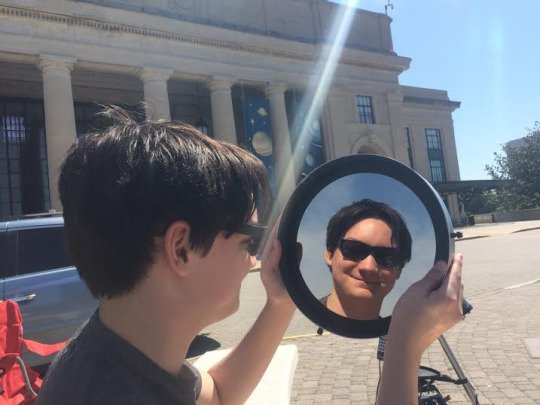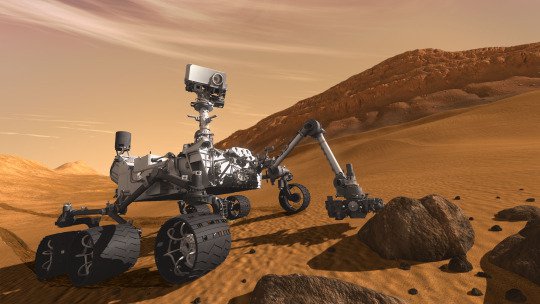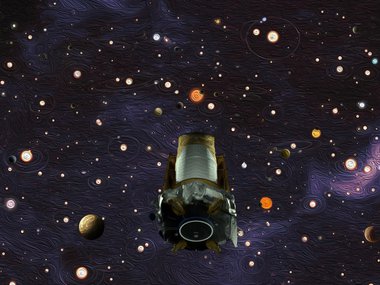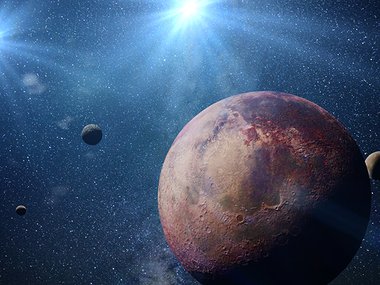What is Your NASA Top 5?
Posted: May 31, 2017
On July 29, 1958, President Eisenhower signed the National Space Aeronautics Act which gave birth to our space exploration program, NASA. Here were are 58 years later and we can look back at some pretty remarkable accomplishments.

Here at the Museum, our world is filled with astronomy and space lovers. We asked our volunteer and all around space enthusiast Tyler Hutchison to put together his Top 5 NASA moments to help celebrate this momentous occasion in history.
Top Five Achievements of NASA
Mars Science Laboratory (2011- present)
Hubble Space Telescope (1990- present)
- Mission: Ritchey-Chrétien reflecting space telescopic observatory
- Launch Date: April 24, 1990, aboard Space Shuttle Discovery STS-31
- Deployment Date: April 25, 1990. Entered service on May 20, 1990.
- Design: Hubble contains communications antennae responsible for relaying data to scientists on Earth as well as planning and carrying out observations from the Goddard Space Flight Center in Greenbelt, MD. The telescope operates using power generated from photovoltaic solar cells mounted on the spacecraft’s exterior. In addition, Hubble contains many automated computer systems and microprocessors responsible for daily adjustments and operation. Hubble is built to withstand zero gravity conditions as well as experience temperature fluctuations of 100 degrees Fahrenheit during each orbit.

Space Shuttle Program (1981-2011)
Apollo Program (1961-1972)
Voyager Program (1977- present)
- Mission: A rare alignment of planets in the 1970’s allowed a spacecraft to visit all four giant planets. The Voyager 1 probe was launched with the goal of collecting information on the atmospheres, interiors, satellites, and magnetospheres of the planets Jupiter and Saturn, as well as collect data regarding their satellites and planetary rings. Voyager 2 completed many of the same objectives as Voyager 1, as well as visit and collect data from the planets Uranus and Neptune, along with their moons and rings. In addition, the Voyager probes are now investigating the far outer regions of the Solar System’s helisphere.
- Launch Date: Voyager 1: September 5, 1977; Voyager 2: August 20, 1977
- Arrival Date: Voyager 1: Jupiter: March 1979, Saturn: November 1980; Voyager 2: Jupiter: July 1979, Saturn: August 1981, Uranus: January 1986, Neptune: August 1989
- Design: The Voyager probes were identical in design and featured stabilizing systems that keep the high-gain antennae pointed toward Earth. The crafts each weigh approximately 773 kilograms with 105 kilograms of scientific instruments. The Voyagers each contain a Voyager Golden Record with sounds and images portraying culture and diversity of life on Earth. The records are intended for extraterrestrial or future human explorers that might one day find them. The probes are each powered by radioisotope thermoelectric generators.
- Accomplishments: The Voyagers have discovered 22 new satellites (3 at Jupiter, 3 at Saturn, 10 at Uranus, and 6 at Neptune), as well as the discovery of Jupiter’s rings and new information regarding the rings of Saturn, Uranus, and Neptune. Voyager 2 also discovered Uranian and Neptunian magnetospheres. The probes discovered auroral zones on Jupiter, Saturn, and Neptune, as well as active volcanism on Io, one of Jupiter’s moons, and geyser-like structures on Triton, Neptune’s largest moon.


